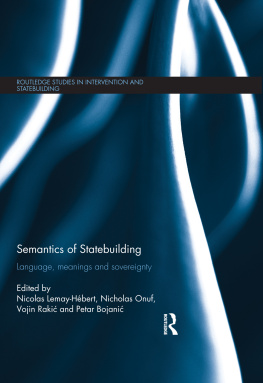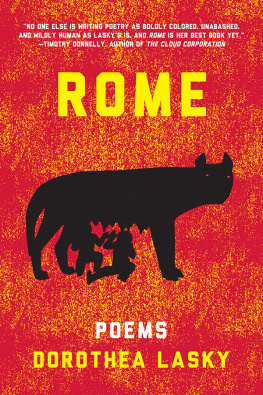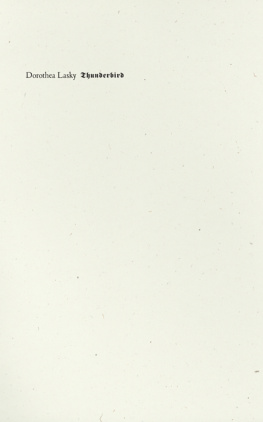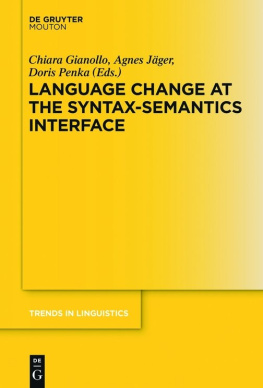First published 2005 by Transaction Publishers
Published 2017 by Routledge
2 Park Square, Milton Park, Abingdon, Oxon OX14 4RN
711 Third Avenue, New York, NY 10017, USA
Routledge is an imprint of the Taylor & Francis Group, an informa business
Copyright 2005 by Taylor & Francis.
All rights reserved. No part of this book may be reprinted or reproduced or utilised in any form or by any electronic, mechanical, or other means, now known or hereafter invented, including photocopying and recording, or in any information storage or retrieval system, without permission in writing from the publishers.
Notice:
Product or corporate names may be trademarks or registered trademarks, and are used only for identification and explanation without intent to infringe.
Library of Congress Catalog Number: 00-034408
The Library of Congress has cataloged Volume 1 as follows:
Lasky, Melvin J.
The language of journalism / Melvin J. Lasky
p. cm.
Includes bibliographical references and index.
Contents: v. 1. Newspaper culture.
ISBN 0-7658-0001-2 (v. 1. : alk. paper)
1. NewspapersLanguage. 2. JournalismLanguage. I. Title.
PN4783.L37 2000
00-034408
070.4014dc2
ISBN 13: 978-0-7658-0220-0 (hbk)
Take Care When You Get information. We Live By information, Which Exists By Faith in Others. But If the Ear is the Side-Door of Truth It is the Front-Door of Lies.the Truth Seldom Comes in Elemental Purity, Especially From Afar there is Always Some Admixture of Moods of Those Through Whom It Has Passed. Passions Tinge and Color Whatever they touch, Sometimes Favorably, Sometimes Odiously. Pay attention to intentions.Let Reflection Test for Falsity and Exaggeration.
Balthasar Gracin, the Art ofWorldly Wisdom Oraculo Manual Y Arte De Prudencia (1647)
Now that my second volume has been completed and set for publication, that infallibly mathematical half-way mark has surely been reached. At least for trilogies. And Kafka in his inscrutable way recommended it as the fateful point of no return. Now there is no turning back, but the readeror the browser in a bookshop with this book momentarily in his handneed not be alarmed. The momentum which was unleashed a thousand pages ago by the traumatic impulse of my fathers disillusionment with the New York Times (fifty years or so ago) will now be carrying me and the argument to the very bitter end; and the author can give the reader an important reassurance: He need not have read the first volume of The Language of Journalism (2000) to be profitably provokedand possibly persuadedby the sequel he, or she, has in his or her hand. A neighborhood wit once coined, in the days when we went to the movies in the afternoon (mostly Saturdays) and the double-features were being shown in continuous performance, the immortal recommendation for us, the early-bird matine crowd, to the effect that This is a film that begins in the middlefor the people who came in in the middle! This is such a book.
I admit that with the years since the first volume appeared I have tried to develop and vary the analysis, and indeed to extend the research; and still I feel that coming closer to the end was like approaching the beginning. I was temptedbut an editors blue pencil overruled meto add yet another revealing motto somewhere around the thousandth page. This would, with Aristotelian authority (no less), associate everything I was saying with large Athenian ambitions and classical wisdom. The ancient credo was full of promises: We will then show how the absurdities of speech are born from the misunderstandings of similar words for different things and different words for similar things, from garrulity and repetition, from play on words, from diminutives, from errors of pronunciation, and from barbarisms (Aristotle, Poetics , c. 350 B . C .). I still have, as is obvious, wangled its interpolation here, for prefaces are also promises. But there are also obvious lessons to be learned from such belated commitments. A famous warning from one self-critical master came up with the aptest of cautions: What one learns last in writing a book is what should have come first. Or, come to think about it, how to begin in the middle.
In my own case what might have come first, or at least very much earlier, is an unforgivably tardy awareness of how it all began, and where and why. I have often on the previous pages made reference, in personal bursts of remembrance, to early reading habits (to the Times and the Bronx Home News )to family traditions of literacy (my grandfathers pious addiction to his favorite local daily, my fathers blue-eyed faith in his)to my university years wherein a small group of New York students, alternately poring over cryptic medieval documents and stop-press stories in our daily newspapers, learned to detect hidden meanings (or so we thought) buried deep beneath the superficial visible surface of reported events. My old City College classmate Irving Kristol reminded me the other day in Washington that the collegiate review I edited from our shared Alcove 2a mag called History Chronicle (to which he was a contributor)looked, sounded, and read like all the subsequent journals I had anything to do with. (It also featured, in its large double-column pages wayward quotes, stray clips, odd footnotes, and other eclectic tidbits, printed alternately in italics and boldface, and framed by a thin-lined box.) So much for growing up, coming-of-age, and the delusions of progress and change.
Do all attempts to remember the past turn up, in agreeably familiar patterns of discovery, similarities if not identities? Is it inevitable that what we recall is shaped by such apt episodes of selective relevance? My first semi-professional experience as a teenage editor of a literary magazine entitled the Magpie only strengthened our youthful foraging instincts, to steal away with a few shining bits of truth. The world was turning out to be a hard place to understand; and whether in the library or at the newspaper-stand, we were driven each day to come away with an item or two, underlined with apparent perceptiveness or, even better: stabbing insights.
Looking back in the perspective of half-a-century, I think I can detect the line that took me from there to here. Novels, of course, were the stepping-stones. I remember the newsreel insertions which adorned John Dos Passos Manhattan Transfer (and the other volumes in his USA trilogy), replete with artfully selected news-items. I hesitate to mention Marcel Proust, but then the madeleine experience, now so platitudinous, seemed to be happening for the first time, at least for young readers. We would have to remember the actions and the passions of our own generation; and we were, whether we knew it or not, stocking up on little stimuli which would be on hand when memories needed to be fully recalled. An old cutting takes on new life, and becomes the illuminating context for (in Burtons seventeenth-century phrase) new news . To be sure, professional journalists in our time all had at their command their own newspapers so-called morgue : presumably the place where the old dead stories could be summoned up to serve as still lively factual background. This might add a spot of color and coherence to a fast-breaking story. But where was truth? or where was art? Could newspaper culture embrace the highest values ( what , with collections of yellowing clippings)?






